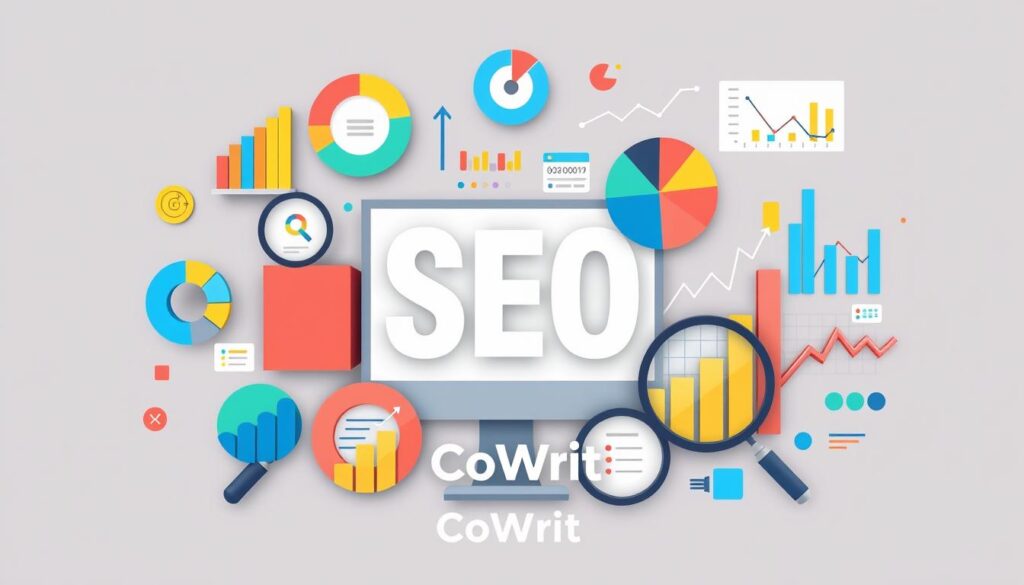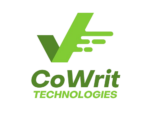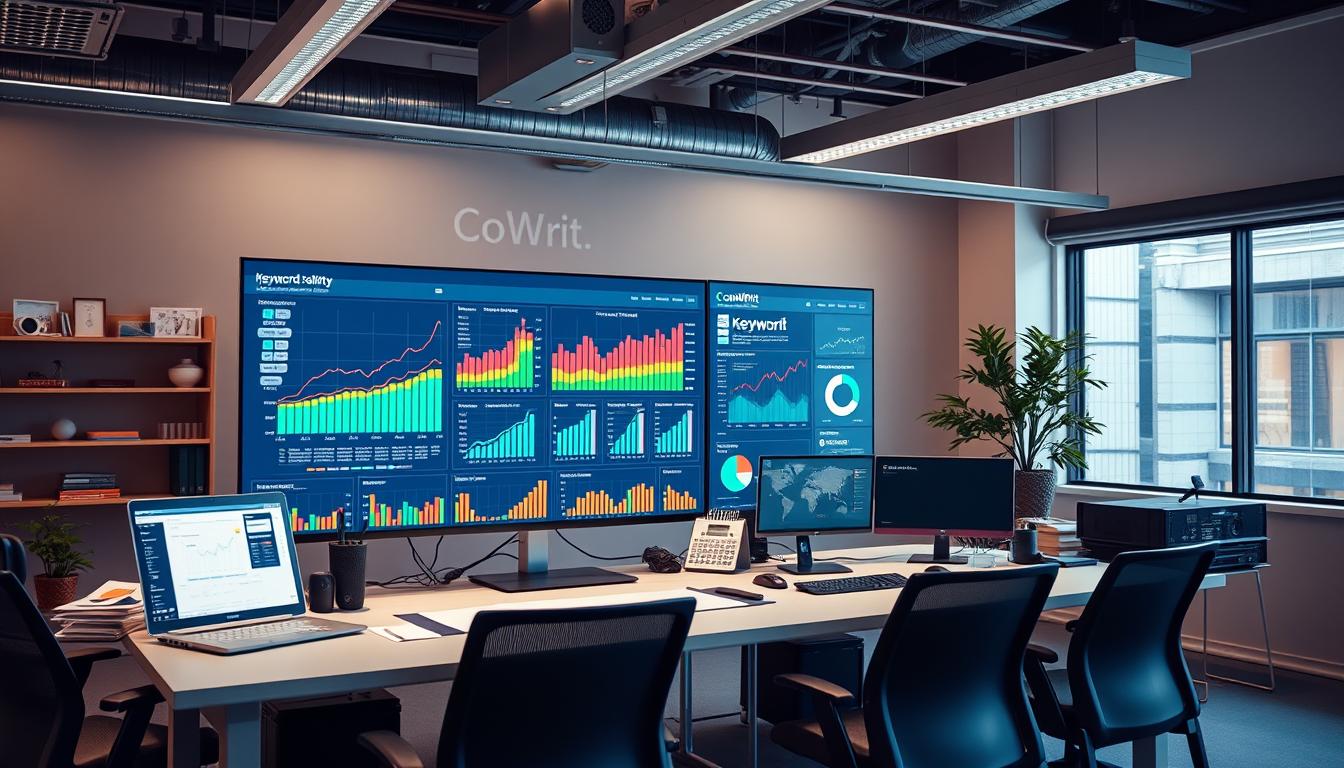In today’s world, over 90% of online activities start with a search engine. This makes having a good search engine optimization (SEO) strategy key. It helps grab people’s attention and brings more visitors to your site. Our guide, “Boost Traffic: SEO Optimization Tactics Guide 2024,” covers the newest SEO methods and strategies. It aims to help you beat your rivals and reach your goals.
If you run a small business, create content, or work in marketing, this guide is for you. It will give you the tools and knowledge to make your online presence stronger. We’ll cover everything from finding the right keywords to improving your site’s technical side.
Key Takeaways
- Discover the power of comprehensive keyword research to target the right audience.
- Leverage on-page SEO tactics to improve your website’s visibility and rankings.
- Create high-quality, shareable content that resonates with your target market.
- Enhance your site’s technical performance to provide an exceptional user experience.
- Implement effective backlink building strategies to boost your domain authority.
Understanding SEO Optimization and Its Importance
Search engine optimization (SEO) makes your website more visible in search results. This brings more organic traffic to your site. By using good SEO strategies, you can get your site to rank higher and reach more people.
What is SEO?
SEO is about making your website easier for search engines like Google and Bing to find. It involves using keywords, creating good content, and improving your site’s technical aspects. All these help your site look more relevant and trustworthy to search algorithms.
Why SEO Matters for Organic Traffic
In today’s digital world, search engine optimization is key for businesses and individuals. Most online searches start with a query, so being at the top of search results is vital. Good SEO can boost your site’s visibility, draw in more visitors, and increase your SEO importance.
“Organic search is the highest ROI channel, delivering 49% of all website traffic.” – Search Engine Land
SEO is more than just getting more visitors. It helps search engines understand and index your content better. This makes your site more accessible to your audience. By optimizing your site, you improve its performance, user experience, and long-term success in the digital world.
Keyword Research: The Foundation of SEO
Mastering keyword research is key to successful SEO. Finding the right keywords helps you create content that speaks to your audience. This boosts your visibility in search results. Let’s explore the tools and strategies to improve your keyword research.
Tools for Keyword Research
Use powerful tools to find valuable keywords. Google Keyword Planner is free and offers insights on search volume and competition. Moz Keyword Explorer and SEMrush’s Keyword Magic Tool also provide detailed analysis and suggestions.
Long-Tail vs. Short-Tail Keywords
- Short-tail keywords, like one or two words, get a lot of searches but are very competitive.
- Long-tail keywords, with three words or more, get fewer searches but are less competitive and show specific user intent.
Using both long-tail and short-tail keywords can help your content reach different stages of the buyer’s journey. This improves your search visibility.
| Keyword | Monthly Search Volume | Keyword Difficulty |
|---|---|---|
| “small business SEO” | 2,500 | Very High |
| “SEO tips for small businesses” | 300 | Moderate |
“Small business SEO” gets a lot of searches but is hard to rank for. “SEO tips for small businesses” gets fewer searches but is easier to rank for. This makes it a better choice for targeted optimization.

Good keyword research helps you make content that meets your audience’s needs. This drives organic traffic and boosts your business success.
On-Page SEO Tactics to Increase Visibility
On-page SEO tactics are key to getting more organic traffic. They focus on making each web page better for search engines. By using great title tags, meta descriptions, and header tags, you can get more visitors.
Crafting Compelling Title Tags
Your title tag is the first thing people see in search results. It must be short, include keywords, and match the page’s content. Keep it between 50-60 characters for the best results.
Utilizing Meta Descriptions Effectively
Meta descriptions help get more clicks from search results. Make them engaging, include your keyword, and have a clear call-to-action. Using active voice and focusing on what users want can increase clicks.
Importance of Header Tags
Header tags (H1, H2, H3) help both users and search engines understand your page. Use your target keywords in these tags to improve your page’s ranking. Keep your content organized and avoid stuffing keywords for a better user experience.
“Mastering on-page SEO is essential for driving organic traffic and establishing your website as a trusted, authoritative resource in the eyes of search engines.”
Using these on-page SEO tactics can greatly improve your website’s visibility. It can also bring more qualified leads to your business. On-page optimization gives you control over search engine rankings, making it a vital part of any SEO strategy.
Content Creation: Quality Over Quantity
In today’s digital world, content creation is key for SEO success. It’s tempting to make lots of content fast. But, the real secret to more website visitors and a stronger online presence is finding the right balance between quality and quantity.
Creating Valuable, Shareable Content
Search engines now focus more on content that’s relevant and easy to use. This means making shareable content that really speaks to your audience. Instead of just writing articles, aim to create detailed, well-researched content that adds real value.
Understanding what your audience is looking for and solving their problems can make your content stand out. This approach encourages people to pay attention and get involved.
The Role of Blogs in SEO
Blogs are essential for good blog SEO strategies. They let you post new, relevant content regularly. This keeps your site fresh and interesting, and tells search engines your site is worth visiting.
By using the right keywords and optimizing your blog for search, you can make your site more visible. This helps attract more visitors without relying on paid ads.
Using Multimedia to Engage Users
Today, content that’s rich in visuals like images, videos, and infographics is more engaging. These elements make your content more attractive and help people remember it better. This can lead to more time spent on your site, which search engines see as a positive sign.
| Metric | Value | Impact |
|---|---|---|
| Website Abandonment Rate | 40% of users abandon websites that take over 3 seconds to load | Costing retailers $2.6 billion in lost sales annually |
| Organic Traffic Increase | Long-tail keywords can increase organic traffic by up to 106% | Through historical optimization |
| Largest Contentful Paint (LCP) Score | A good LCP score is below 2.5 seconds | Impacts user experience and search result page rankings |

By focusing on quality content, you can build a strong online presence. This improves user engagement and your SEO performance. The goal is to create content that’s valuable, shareable, and meets your audience’s needs.
Technical SEO: Enhancing Site Performance
In the fast-paced world of digital marketing, technical SEO is key. It makes your website easier for search engines to find and understand. By focusing on technical SEO, you can make your site faster, more user-friendly, and more visible online.
Improving Site Speed and User Experience
Site speed is very important in technical SEO. Fast websites are favored by both search engines and users. To make your site faster, try compressing images and minifying code. These steps can make your site load quicker, improving user experience and search rankings.
Mobile Optimization
With more people using mobile devices, having a mobile-friendly website is essential. A responsive design makes your site work well on all devices. Use Google’s Mobile-Friendly Test to check your site and fix any mobile issues.
Improving your site’s technical SEO, like speed and mobile optimization, strengthens your online presence. This leads to better user experience, higher rankings, and more visitors to your site.
Backlink Building Strategies
In the world of search engine optimization, backlinks are very important. They show search engines that your content is worth ranking high. It’s key to use proven strategies to get these valuable backlinks.
Identifying Quality Link Opportunities
Finding good link opportunities is crucial. Look for sites with high domain authority (DA) and are related to your field. These links can greatly improve your search engine ranking. Stay away from low-quality link farms or sites that don’t match your industry.
Best Practices for Guest Blogging
Guest blogging is a top way to get backlinks. By writing valuable content for other sites, you get a backlink and grow your audience. Choose sites with a high DA and an audience that matches your target.

The aim of backlink building is to get real, quality link opportunities. These should improve the user experience and show search engines you’re credible. Don’t use shortcuts or black-hat tactics, as they can harm your reputation.
“A single high-quality backlink can be more powerful than 1,000 low-quality backlinks.”
By focusing on guest blogging and other good backlink building methods, you’ll improve your site’s visibility. This will drive more traffic and help you meet your SEO goals.
Local SEO Tactics for Targeted Traffic
In today’s digital world, focusing on local SEO is key. It helps you attract more people who are looking for what you offer in your area. You can do this by making your Google My Business profile shine and using local keywords.
Optimizing Google My Business
Your Google My Business (GMB) profile is a powerful tool for local SEO. Make sure it’s accurate, up-to-date, and looks great. Add high-quality images, answer customer reviews quickly, and post updates often.
These steps can make you more visible in local searches. They also help build trust with people who might become your customers.
Importance of Local Keywords
- Use location-specific keywords in your website content and online assets.
- Target specific searches with long-tail local keywords, like “mexican restaurants in dallas” or “plumber near me.”
- Find relevant local search terms with Google Autocomplete and other tools.
By improving your local SEO, you can get more people who are actually looking for what you offer. Keep your online listings accurate and focus on local keywords. This is how you succeed in local searches.
| Local SEO Tactic | Benefit |
|---|---|
| Optimizing Google My Business | Improved visibility in local search results, increased trust and credibility |
| Leveraging local keywords | Targeting more specific, high-intent searches, increased organic traffic |
| Maintaining consistent NAP citations | Verifying business information, enhancing online presence and legitimacy |
“46% of all Google searches are looking for local information. Businesses that optimize for local SEO are more likely to be found by these searchers and drive targeted traffic to their websites.”
Measuring SEO Success: Tools and Metrics
It’s key to track your website’s performance to see how well your SEO is doing. Tools like Google Analytics give you insights into your site’s traffic, how users behave, and conversion rates. Knowing these SEO metrics helps you make smart choices to improve your strategies and grow.
Google Analytics for Tracking Traffic
Google Analytics is a powerful tool that shows a lot about your website’s health. It helps you see how your organic traffic is doing and how users interact with your site. By watching your Google Analytics closely, you can find out what content and marketing work best for your audience.
Understanding Key Performance Indicators (KPIs)
It’s also important to look at specific KPIs for SEO. These include:
- Organic traffic growth
- Keyword rankings
- Click-through rates (CTR)
- Bounce rates
- Conversion rates
By checking these metrics often, you can see if your SEO is working. This helps you make smart choices to boost your online presence and performance.

“Regularly analyzing your SEO metrics is the key to unlocking sustainable growth and optimizing your digital presence.”
SEO is a continuous effort, and keeping track of your progress is vital for lasting success. Use the data from tools like Google Analytics and focus on the KPIs for SEO that are most important for your business goals.
Staying Ahead: SEO Trends for 2024
The digital world is always changing, and keeping up is key for SEO success. In 2024, two big trends will shape SEO: voice search and video SEO.
Voice Search Optimization
Voice search is getting more popular, thanks to devices like smart speakers. By 2024, half of all mobile searches will be voice-based. To stay ahead, businesses need to use natural language and question-based keywords in their content.
Creating content that answers user questions is crucial. This way, your site will rank well in voice search results.
The Rise of Video SEO
Video content is now a big part of our online lives, and its SEO importance will grow in 2024. To succeed in video SEO, optimize your video titles, descriptions, and transcripts. Also, use relevant keywords and focus on user engagement like watch time and click-through rates.
Adapting to these trends is essential for businesses. By focusing on voice search and video content, you can meet your audience’s changing needs. This will help drive more organic traffic and boost your online presence in 2024 and beyond.
“In 2023, there was a notable increase in marketers utilizing AI tools for SEO tasks to streamline processes and save time.”
Common SEO Mistakes to Avoid
Optimizing your website for search engines is complex and always changing. It’s key to avoid common SEO mistakes to keep a strong online presence. One big mistake is keyword stuffing. This is when you use too many keywords in your content to try to rank higher.
This method can actually harm your site. It can lead to penalties from search engines and make your site hard to read.
Overstuffing Keywords
Don’t try to stuff as many keywords as you can into your content. Instead, use keywords naturally and organically. This makes your content easier to read and shows search engines it’s helpful.
Keep checking and updating your keyword strategy. This helps you stay on top and keep your SEO strong.
Ignoring User Intent
Good SEO is about more than just search engines. It’s also about understanding what your users want. Spend time learning about the needs behind the keywords you use.
Make your content relevant and valuable. This way, you’ll not only rank better but also build a loyal audience. They’ll engage with your brand more.



